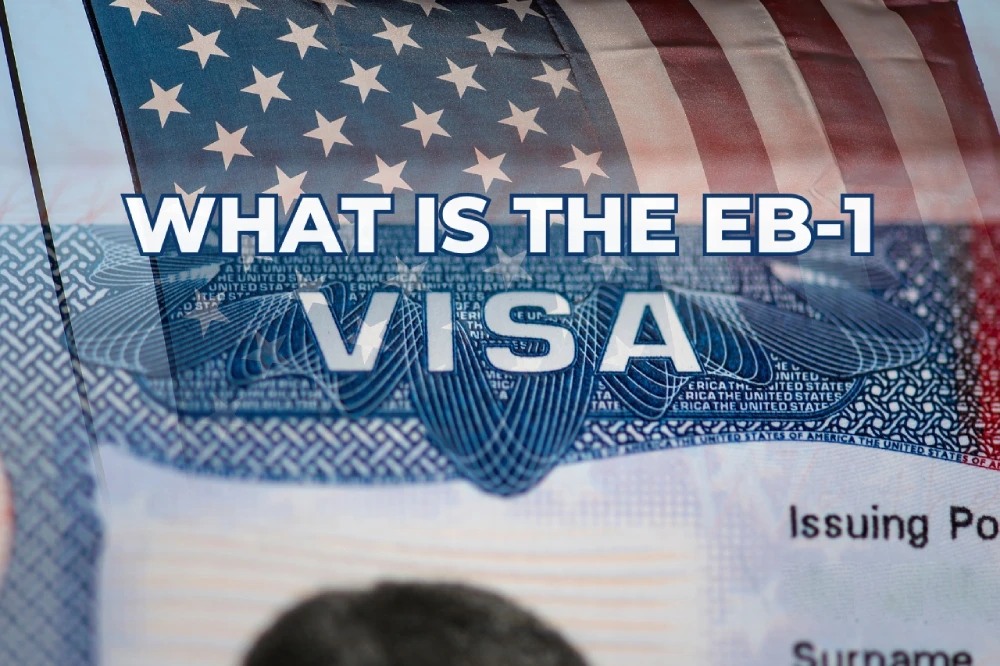The EB-1 (Employment-Based First Preference) green card is designed for individuals who demonstrate exceptional skills and accomplishments in their respective fields. It is divided into three subcategories:
- EB-1A: Individuals of Extraordinary Ability
- For individuals who have demonstrated outstanding achievements in sciences, arts, education, business, or athletics.
- Requires proof of sustained national or international acclaim, such as major awards, media recognition, or leadership roles.
- No job offer required—self-petition is allowed.
- EB-1B: Outstanding Professors and Researchers
- For highly accomplished researchers and professors with at least three years of experience in academia or industry.
- Requires a permanent job offer from a U.S. employer (such as a university or research institution).
- Must demonstrate international recognition through publications, citations, or awards.
- EB-1C: Multinational Executives and Managers
- For executives or managers who have worked for a multinational company outside the U.S. for at least one year in the past three years.
- Requires a U.S. employer sponsor who is a branch, affiliate, or subsidiary of the foreign company.
- The job must involve high-level decision-making or operational management.
Benefits of the EB-1 Green Card
- Fastest processing time among employment-based green cards.
- No PERM labor certification required.
- EB-1A applicants can self-petition (no employer needed).
- Priority dates for EB-1 are typically current, reducing wait times.
- Allows for premium processing (15-day USCIS decision for I-140 petition).
General EB-1 Eligibility Criteria
To qualify for an EB-1 visa, applicants must provide strong documentary evidence to meet the eligibility requirements. Below are common forms of acceptable proof:
For EB-1A (Extraordinary Ability)
You must meet at least three of the following 10 criteria or provide evidence of a one-time major achievement (e.g., Nobel Prize, Olympic Medal, Pulitzer Prize, etc.):
✅ Awards & Recognition – National or international awards for excellence.
✅ Membership in Prestigious Organizations – Requires outstanding achievement.
✅ Published Material About You – Featured in major media or journals.
✅ Judging the Work of Others – Peer reviewer, panel judge, or competition evaluator.
✅ Significant Contributions to Your Field – Innovations, patents, or impactful work.
✅ Authorship of Scholarly Articles – Published work in academic or professional journals.
✅ Artistic or Scientific Exhibitions – Showcasing work at leading events.
✅ Leading or Critical Role in a Distinguished Organization – Key executive or leadership position.
✅ Commanding a High Salary – Demonstrates exceptional skill level.
✅ Commercial Success in Performing Arts – Box office sales, music records, etc.
For EB-1B (Outstanding Professors & Researchers)
Must meet at least two of the following criteria:
✔️ Major prizes or awards for excellence in research.
✔️ Membership in exclusive professional organizations.
✔️ Published material about your work in professional publications.
✔️ Judging the work of others in your field.
✔️ Original scientific or scholarly research contributions.
✔️ Authorship of books or articles in reputable journals.
For EB-1C (Multinational Executives & Managers)
Must prove:
- At least one year of executive or managerial experience within the past three years.
- The U.S. employer is a branch, affiliate, or subsidiary of the foreign company.
- The job requires substantial decision-making authority.
EB-1 Green Card Application Process
Step 1: File Form I-140 (Immigrant Petition for Alien Worker)
- EB-1A applicants can self-petition, while EB-1B and EB-1C require an employer sponsor.
- Processing time varies from 6–12 months (or 15 days with premium processing).
Step 2: Adjustment of Status or Consular Processing
- If inside the U.S., file Form I-485 (Adjustment of Status).
- If outside the U.S., undergo consular processing via the U.S. embassy.
Step 3: Green Card Approval
- Upon USCIS or consular approval, receive a 10-year green card.
Tips for a Successful EB-1 Application
✅ Collect strong evidence – Provide documents that prove achievements with clarity.
✅ Showcase international recognition – Media coverage, publications, or awards strengthen the case.
✅ Use expert letters – Letters from industry leaders, employers, or renowned professionals can support your petition.
✅ Consult an immigration attorney – A lawyer can help craft a persuasive petition and avoid delays.
How Long Does the EB-1 Process Take?
The processing time depends on whether a priority date is current. In most cases:
- Form I-140 Processing: 6–12 months (or 15 days with premium processing).
- Adjustment of Status (I-485): 6–12 months (if priority date is current).
- Total Time to Green Card: Approximately 1–2 years.
Final Thoughts: Is EB-1 Right for You?
The EB-1 green card is a powerful option for highly skilled professionals, executives, and researchers looking for a fast-tracked U.S. permanent residency. If you meet the strict eligibility criteria, this could be your best route to a green card without employer sponsorship or lengthy wait times.
Need Help With Your EB-1 Petition?
Navigating the EB-1 process can be complex, but our immigration attorney can help. Contact us today to schedule a consultation and start your journey toward a green card approval!
Disclaimer: This is Not Legal Advice
The information provided in this blog is for general informational purposes only and should not be construed as legal advice. While we strive to ensure that the information is accurate and up to date, it may not reflect the most current legal developments. Immigration laws and policies are subject to change, and individual circumstances can vary greatly. Therefore, you should consult with a licensed immigration attorney or qualified legal professional for advice specific to your case. Reliance on the information provided in this blog is solely at your own risk.



